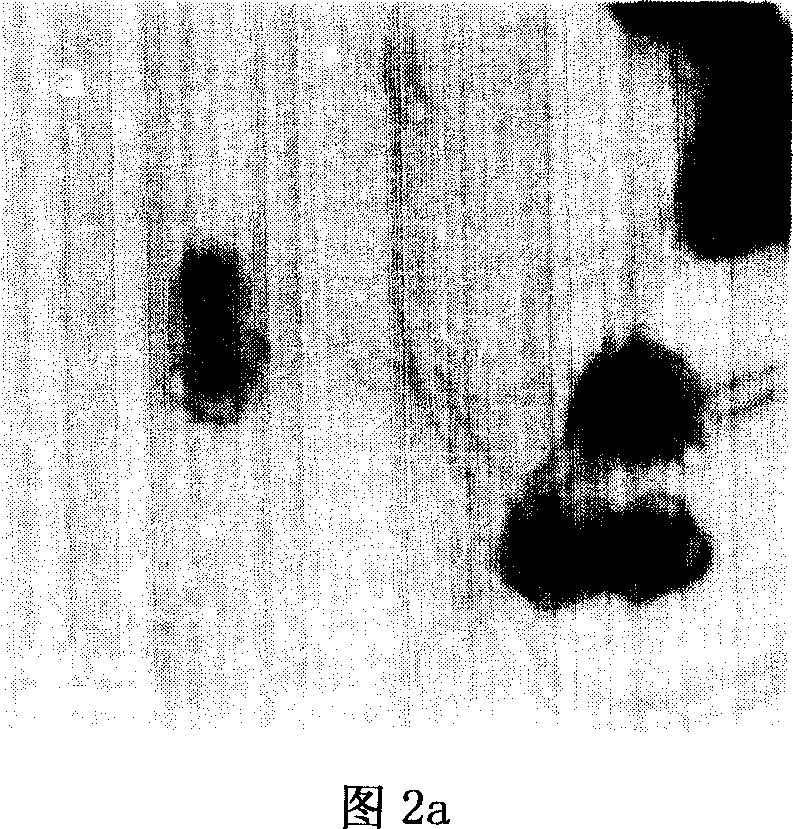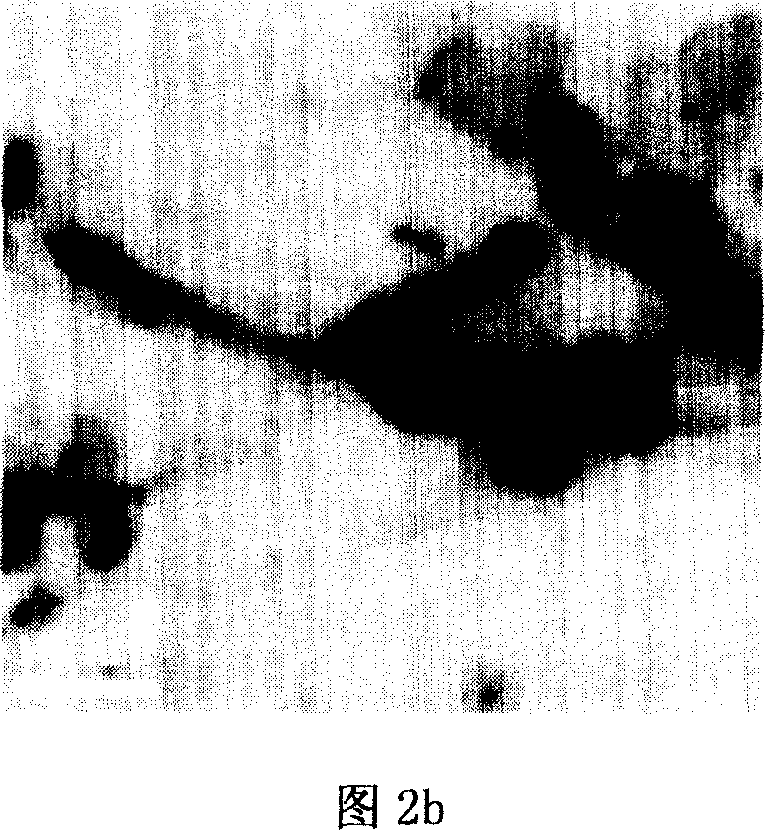Method of modifying multiwall carbon nano-tube
A multi-walled carbon nanotube, vacuum drying technology, applied in the nano field, can solve the problems of non-stable chemical bond connection, no biological and chemical stability, etc., achieve good solvent dispersibility and biocompatibility, simple synthesis method, good controllability
- Summary
- Abstract
- Description
- Claims
- Application Information
AI Technical Summary
Problems solved by technology
Method used
Image
Examples
Embodiment 1
[0027] The multi-walled carbon nanotubes prepared by catalytic pyrolysis method are used as the initial raw material, and after acidification and acylation, they are reacted with phospholipids with amine groups to prepare water-soluble phospholipid-modified multi-walled carbon nanotubes through the covalent interaction of amide bonds. nanotube.
[0028] Step a: In a 100 ml single-necked round-bottomed flask equipped with a magnetic stirring rotor, add 0.5 g of dry multi-walled carbon nanotube raw material and 20 ml of 70% nitric acid, and after 20 kHz ultrasonic treatment for 30 minutes, heat up to 120 Celsius, reflux reaction for 24 hours under stirring, suction filtration with Φ0.22 micron polycarbonate microporous membrane, repeated washing with deionized water to neutrality, vacuum drying at 60 degrees Celsius for 12 hours, and acidified multi-walled carbon nano Tube 0.3125 g.
[0029] Step b: In a 100 ml single-necked round bottom flask equipped with a magnetic stirring ...
Embodiment 2
[0032] The multi-walled carbon nanotubes prepared by the template method are used as the initial raw material. After acidification and acylation, they are reacted with phospholipids with amine groups to prepare water-soluble phospholipid-modified multi-walled carbon nanotubes through the covalent interaction of amide bonds. .
[0033] Step a: In a 100 ml single-neck round bottom flask equipped with a magnetic stirring rotor, add 0.01 g of dry multi-walled carbon nanotube raw material and 5 ml of 70% nitric acid, and after 20 kHz ultrasonic treatment for 30 minutes, heat up to 120 Celsius, reflux reaction for 24 hours under stirring, suction filtration with Φ0.22 micron polycarbonate microporous membrane, repeated washing with deionized water to neutrality, vacuum drying at 60 degrees Celsius for 10 hours, to obtain acidified multi-walled carbon nano Tube 0.015 g.
[0034] Step b: In a 100 ml single-neck round bottom flask equipped with a magnetic stirring rotor, add 0.01 g of...
Embodiment 3
[0037] The multi-walled carbon nanotubes prepared by laser evaporation method are used as the initial raw material. After acidification and acylation, they are reacted with phospholipids with amine groups to prepare water-soluble phospholipid-modified multi-walled carbon nanotubes through the covalent interaction of amide bonds. Tube.
[0038] Step a: In a 100 ml single-neck round bottom flask equipped with a magnetic stirring rotor, add 1 gram of dry multi-walled carbon nanotube raw material and 50 ml of 70% nitric acid, and after 20 kHz ultrasonic treatment for 30 minutes, heat up to 120 Celsius, reflux reaction for 24 hours under stirring, suction filtration with Φ0.22 micron polycarbonate microporous filter membrane, repeated washing with deionized water to neutrality, and vacuum drying at 60 degrees Celsius for 30 hours to obtain acidified multi-walled carbon nano Tube 1.025 g.
[0039] Step b: In a 100 ml single-neck round bottom flask equipped with a magnetic stirring ...
PUM
 Login to View More
Login to View More Abstract
Description
Claims
Application Information
 Login to View More
Login to View More - R&D
- Intellectual Property
- Life Sciences
- Materials
- Tech Scout
- Unparalleled Data Quality
- Higher Quality Content
- 60% Fewer Hallucinations
Browse by: Latest US Patents, China's latest patents, Technical Efficacy Thesaurus, Application Domain, Technology Topic, Popular Technical Reports.
© 2025 PatSnap. All rights reserved.Legal|Privacy policy|Modern Slavery Act Transparency Statement|Sitemap|About US| Contact US: help@patsnap.com



